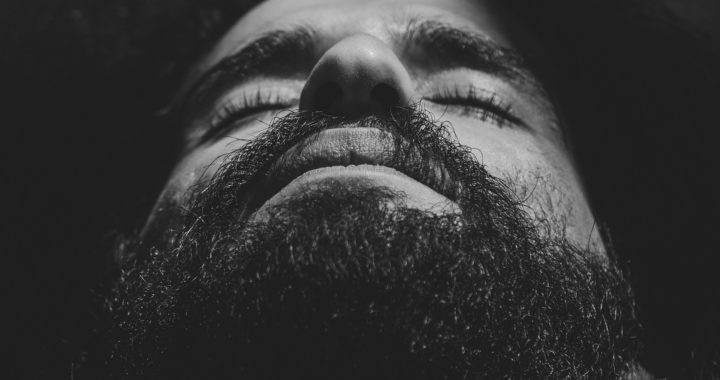Numerous studies have confirmed the effectiveness of minoxidil in treating a particular type of hair loss called androgenetic alopecia or male pattern hair loss and female pattern hair. The topical form of this medication is available over the counter without a prescription and can be applied without medical supervision. Nevertheless, as a popular hair growth treatment, some people and even brands have recommended its use for growing beards and other facial hair.
The Purported Effectiveness of Minoxidil in Growing Beard and Other Facial Hair
Remember that two of the notable advantages of topical minoxidil are its accessibility and its ease of use. It can be purchased in pharmacies, health and wellness stores, grocery stores, and even online storefronts without a prescription. It also comes in water-based or foam-based forms that are applied as a leave-on product.
The effectiveness of minoxidil in treating hair loss due to androgenetic alopecia and promoting hair growth has also paved the way for its application in growing facial hair including beard, mustache, and sideburns. The question of whether it is effective for facial hair growth is up for debate and further studies: Below are the facts:
• The exact mechanism of how topical minoxidil promotes hair growth remains unknown. Findings from several studies have suggested that it acts as a vasodilator that widens blood vessels and improves blood flow to hair follicles while also triggering and prolonging the growth or anagen phase of the hair growth cycle and boosting the development of healthier hair follicle cells.
• Over-the-counter solutions or products have also been used for facial hair growth. Some brands have manufactured and marketed products targeting facial hair with minoxidil as its sole or one of its main active ingredients.
• Some men want to grow and develop facial hair as part of their style and preference. This is common among older adults. This medication has been used in an attempt to promote facial hair growth, develop denser beard, mustache, and sideburns, or resolve uneven or patchy facial hair growth. The medication has also been used for treating hair loss affecting the face.
• Researchers S. Ingprasert et al. concluded in 2016 that men who used a lotion containing 3 percent minoxidil grew and developed some facial hair than those who are in the placebo group. This is one of the most notable studies that investigated the effectiveness of minoxidil in beard growth.
• A 2021 report by K. C. Pang, T. P. Nguyen, and R. Upreti followed a 17-year-old transgender man who used minoxidil to grow facial hair to avoid being misgendered. He developed obvious pigmented facial hair three months after use.
• It is still important to note that there is still little evidence that minoxidil is effective for beard and facial hair growth. Understanding its effectiveness for this particular purpose requires further studies involving large clinical trials and subsequent systematic reviews. Topical minoxidil remains a medication for treating androgenetic alopecia. There are other causes of stunted hair growth and hair loss.
• Genetics and hormones are the main factors that influence the growth of facial hair. Both also determine the quickness and fullness of the beard, mustache, and sideburns. Testosterone is a crucial hormone in facial hair growth. Habits, certain medical conditions, and medications can also affect the growth of facial hair.
• Some men would not be able to develop full and denser facial hair. The number of hair follicles is determined at birth by genetics. Hormonal therapies can still help in facial hair growth but their effects are still limited.
• It is also important to reiterate the fact that minoxidil is used for treating androgenetic alopecia. There are different types of hair loss. There are also different causes that require a more specific treatment option or course of action. Androgenetic alopecia may affect facial hair in several cases.
FURTHER READINGS AND REFERENCES
- Gupta, A. K. and Charrette, A. 2015. “Topical Minoxidil: Systematic Review and Meta-Analysis of its Efficacy in Androgenetic Alopecia.” Skinmed. 13(3): 185-189. PMID: 26380504
- Ingprasert, S., Tanglertsampan, C., Tangphianphan, N., and Reanmanee, C. 2016. “Efficacy and Safety of Minoxidil 3% Lotion for Beard Enhancement: A Randomized, Double-Masked, Placebo-Controlled Study.” The Journal of Dermatology. 43(8): 968-969. DOI: 1111/1346-8138.13312
- Pang, K. C., Nguyen, T. P., and Upreti, R. 2021. “Case Report: Successful Use of Minoxidil to Promote Facial Hair Growth in an Adolescent Transgender Male.” Frontiers in Endocrinology. 12. DOI: 3389/fendo.2021.725269
- Suchonwanit, P., Thammarucha, S., and Leerunyakul, K. 2019. “Minoxidil and Its Use in Hair Disorders: A Review.” Drug Design, Development, and Therapy. 13: 2777-2786. DOI: 2147/dddt.s214907






